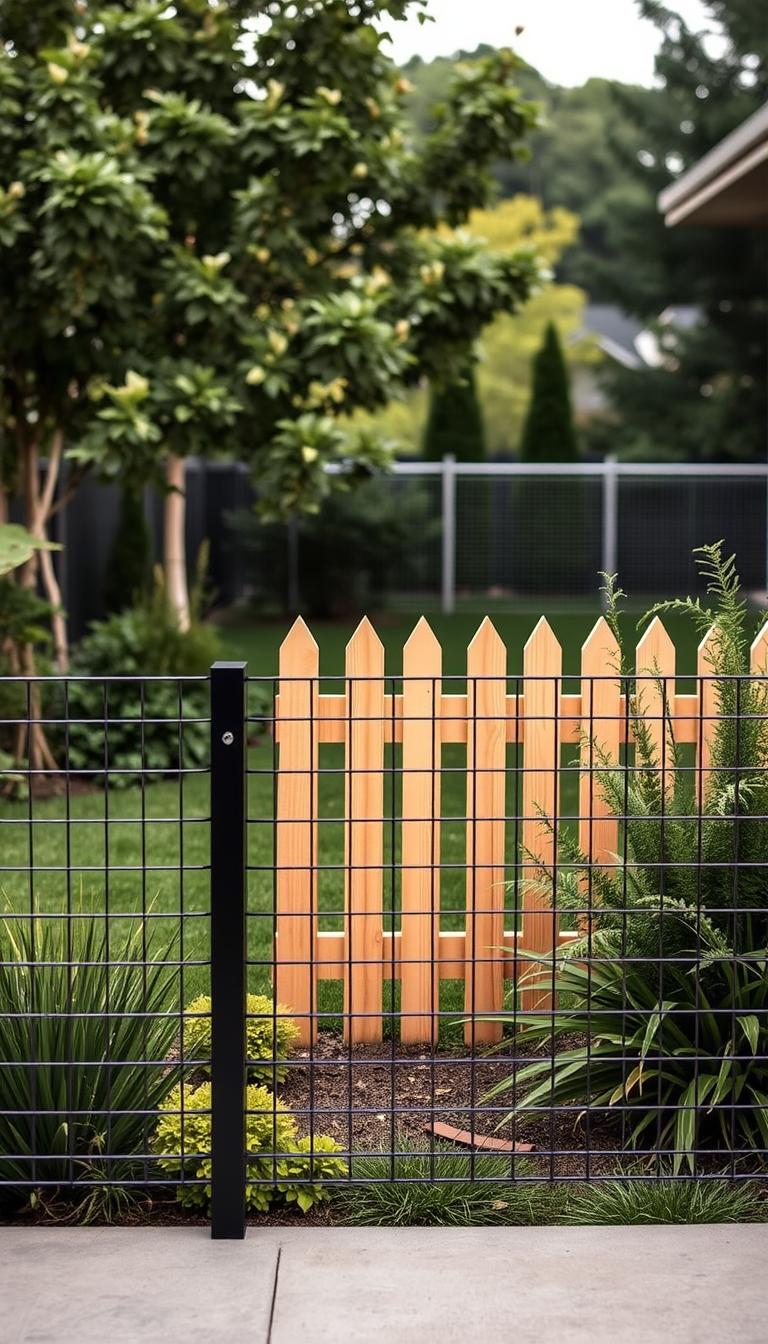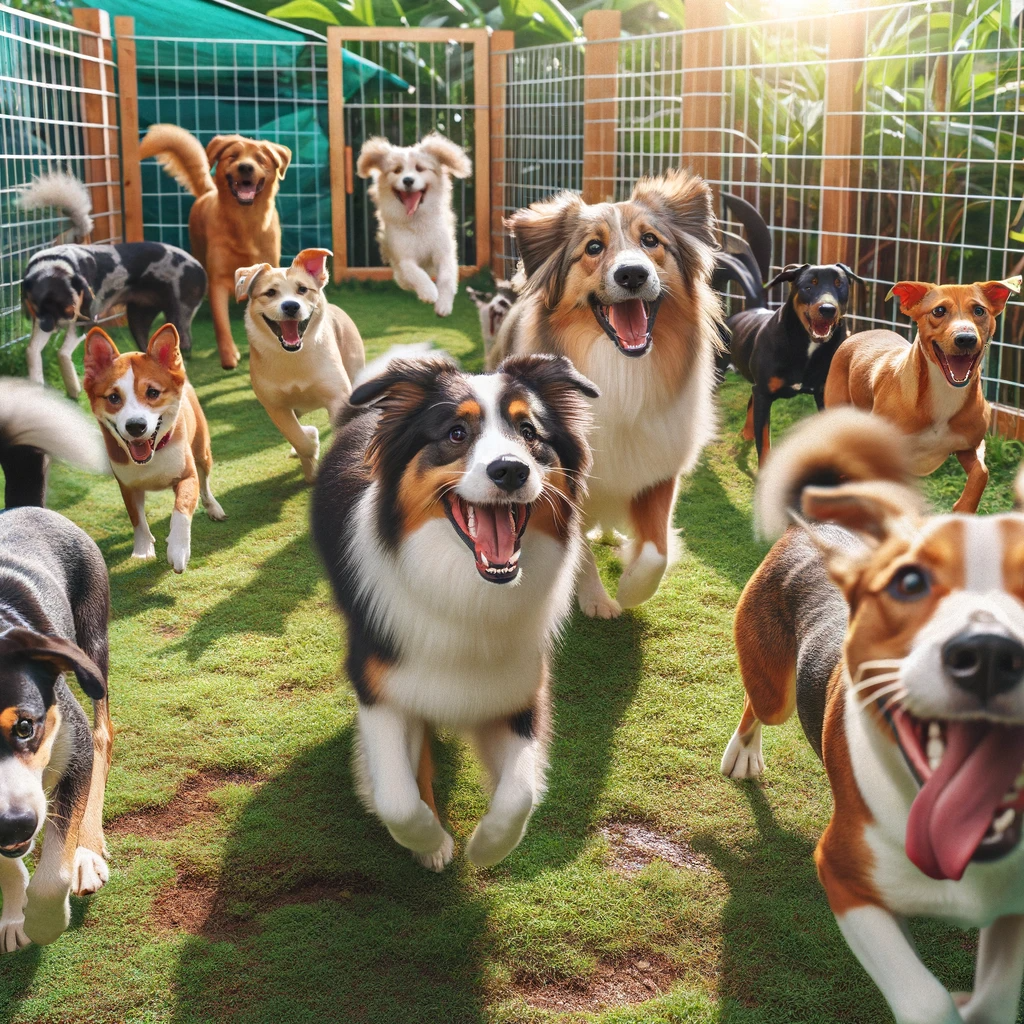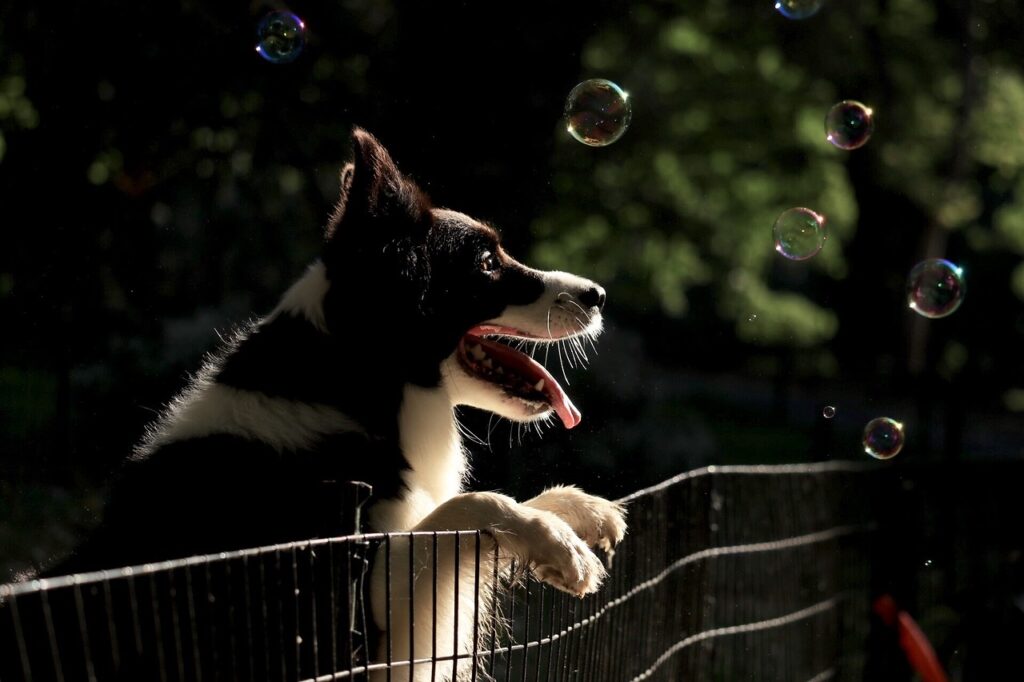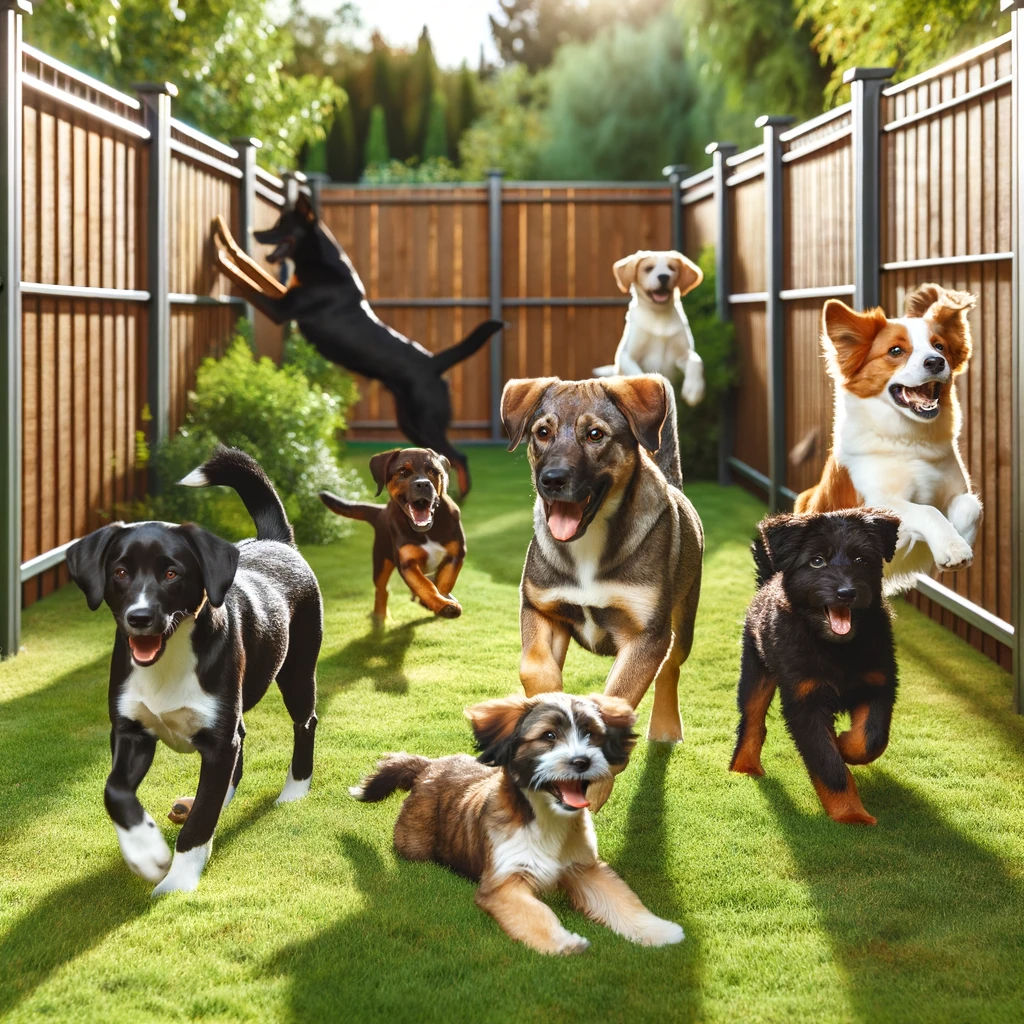Providing your furry companion with freedom while ensuring their safety requires thoughtful planning. A well-designed outdoor enclosure allows pets to explore without risks like traffic, wildlife encounters, or wandering into neighbors’ yards. With 67% of pet owners prioritizing secure boundaries, choosing the right solution balances practicality with your home’s aesthetic.
Modern barriers go beyond basic chain-link designs. You’ll find options ranging from classic wood panels to invisible systems that blend seamlessly into landscapes. Durable vinyl, metalwork with decorative patterns, and even DIY-friendly modular kits offer flexibility for different budgets and property layouts.
Experts emphasize that proper installation prevents gaps and weak spots where curious paws might pry. Height matters too – breeds like Huskies may require taller structures, while smaller dogs need closely spaced posts. Combining physical barriers with training creates a reliable environment where pets thrive.
Key Takeaways
- Secure outdoor spaces reduce escape risks by 89% compared to unsupervised roaming
- Material choices impact durability, maintenance needs, and visual appeal
- Height and spacing requirements vary by pet size and breed tendencies
- Hybrid systems (physical + electronic) provide layered protection
- Local zoning laws often dictate fence height and placement rules
Introduction: Creating a Safe, Stylish Canine Space
A well-planned barrier keeps adventurous pets safe while complementing your home’s design. Modern solutions go beyond basic functionality, blending security with curb appeal that enhances your property’s value.
Why Containment Matters for Curious Companions
Every year, thousands of pets face risks like busy roads or territorial wildlife. A proper barrier prevents 74% of escape attempts, according to veterinary safety studies. It creates a visible boundary that protects your furry family member and gives you peace of mind.
Durable vinyl options resist weathering and chewing better than traditional wood. They’re available in various colors to match your exterior decor. For homes near wooded areas, solid-panel designs block sightlines that might trigger barking at passing animals.
Neighborhood dynamics improve when your pal stays within your yard. No more trampled flower beds or surprise visits to nearby homes. Training reinforces the physical boundary, teaching pets where playtime begins and ends.
Choose materials that withstand your climate and your companion’s energy level. Dig-resistant bases and climb-proof heights matter for persistent explorers. With smart planning, your outdoor space becomes both a sanctuary and a showcase.
The Many Benefits of a Dog Fence
Securing your outdoor space does more than keep your four-legged friend safe—it elevates your property’s functionality and style. Modern solutions blend protection with design, turning practical needs into opportunities for creative landscaping.
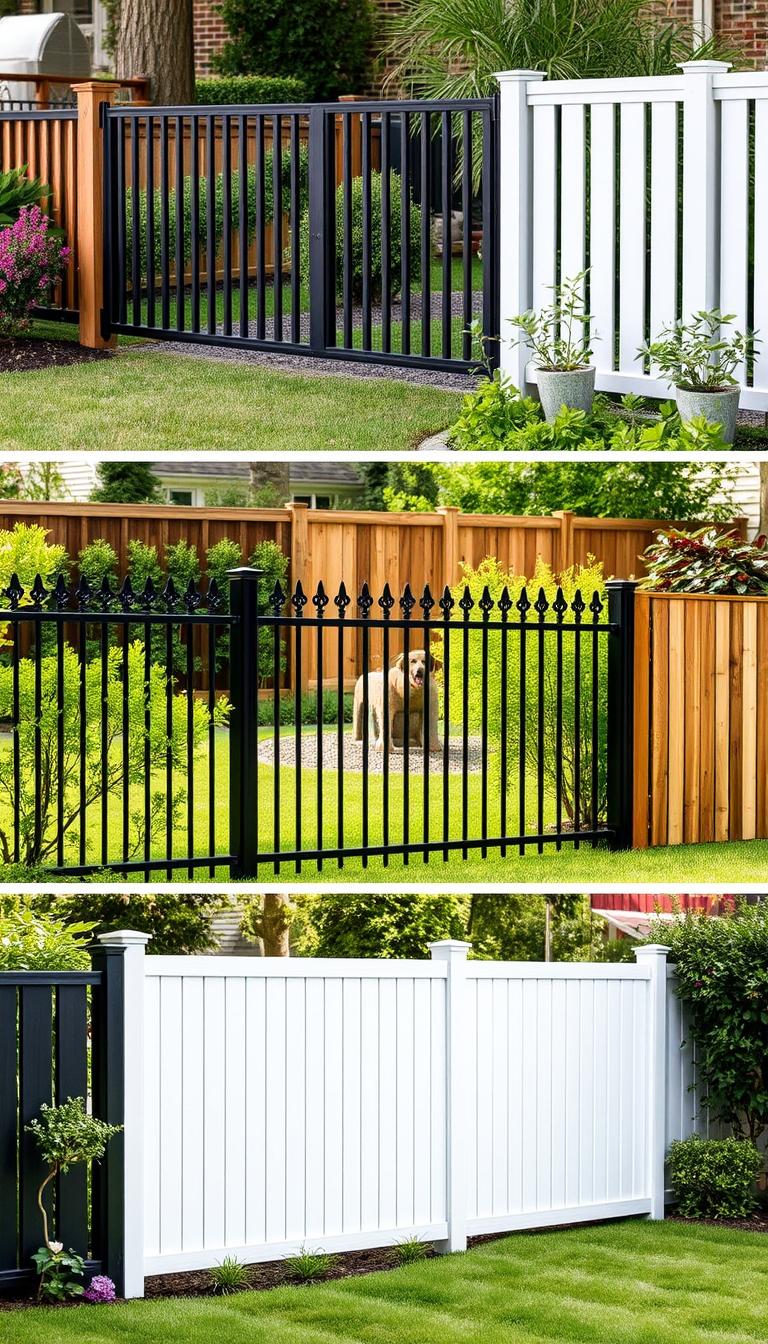
Protecting Your Pet from Potential Dangers
Outdoor hazards like busy streets or curious wildlife pose real risks. A sturdy barrier reduces escape attempts by 74%, giving you confidence during playtime. Solid-panel designs block visual triggers like passing animals, while dig-resistant bases prevent tunneling.
Materials like powder-coated metal withstand chewing and weather extremes. For homes near wooded areas, tall vertical slats keep raccoons or coyotes at bay. Properly spaced pickets ensure smaller breeds can’t squeeze through gaps.
Enhancing Your Yard’s Aesthetic Appeal
Today’s fencing options add visual interest while serving practical needs. Horizontal cedar planks create a sleek, modern look. Ornamental ironwork with scrolling patterns complements traditional homes without sacrificing security.
Vinyl privacy screens in neutral tones blend seamlessly with gardens. Many designs double as trellises for climbing plants, merging greenery with structure. Your space becomes a cohesive retreat where safety and beauty coexist.
Choosing the right style balances your home’s architecture with your companion’s needs. Whether you prefer minimalist lines or rustic charm, there’s a solution that protects pets while reflecting your taste.
Understanding the Importance of Dog Fencing
Creating a secure environment for your furry friend goes beyond basic containment—it builds trust and harmony in your daily routine. Proper barriers prevent accidents while letting your companion enjoy outdoor freedom safely.
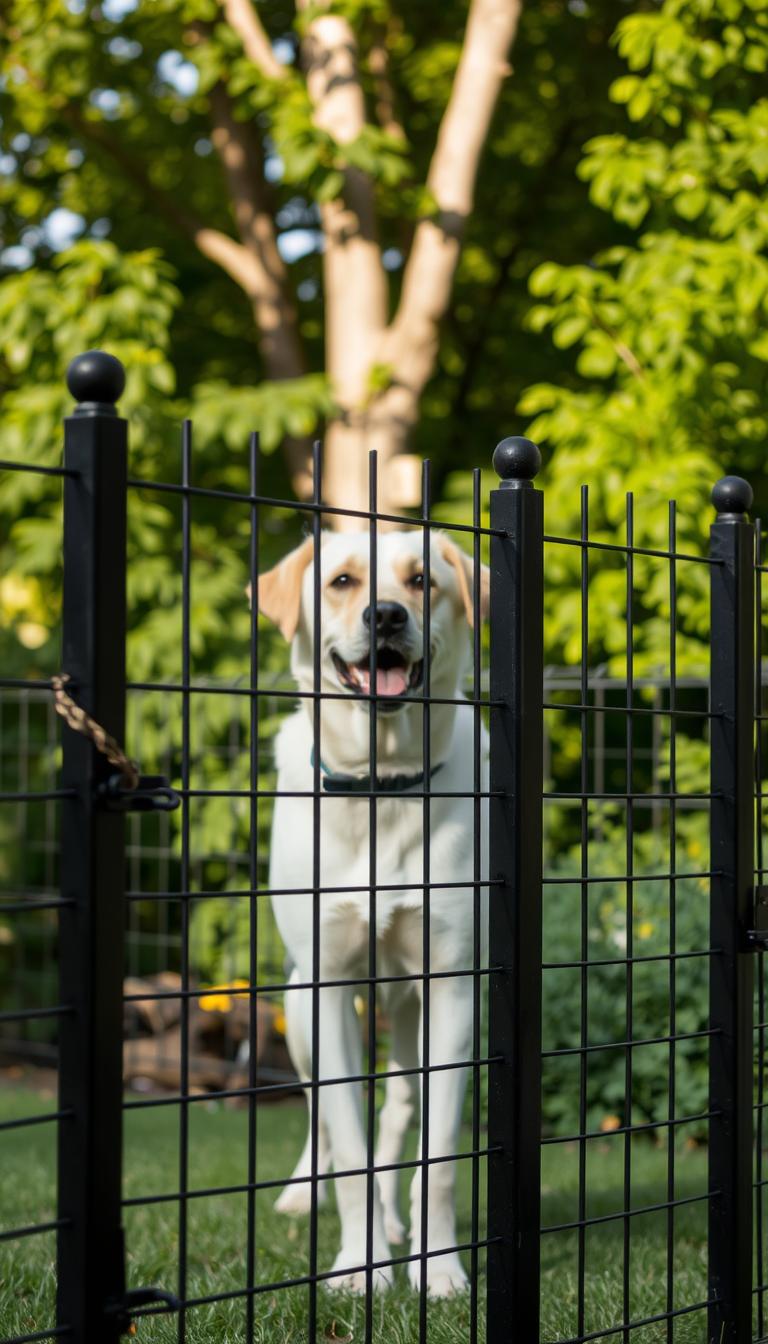
Security and Peace of Mind
A robust enclosure keeps curious paws within your property lines. Studies show 82% of escape attempts fail with well-designed barriers, reducing risks like traffic exposure or wildlife encounters. Choose materials that match your pal’s energy level—dig-resistant bases for persistent diggers, smooth surfaces for climbers.
Your yard becomes a worry-free zone where playtime thrives. Transparent vinyl panels let you monitor activities while maintaining sightlines. For homes near busy roads, solid barriers block both escapes and external distractions.
Preventing Unwanted Escapes and Neighborhood Issues
Roaming pets can strain community relationships. Durable solutions minimize incidents like trampled gardens or surprise visits to nearby homes. One homeowner reported “zero neighbor complaints since upgrading to a 6-foot privacy screen” in a recent survey.
| Containment Option | Visibility | Installation | Security Level |
|---|---|---|---|
| Vinyl Privacy Panels | Low | Professional | High |
| Metal Vertical Slats | Medium | DIY-Friendly | Medium-High |
| Invisible Systems | None | Technical | Variable |
Match your barrier to local wildlife threats and property layout. Spaced pickets work for small breeds, while solid panels deter jumpers. The right choice creates harmony between your needs and community expectations.
Key Factors to Consider When Choosing a Dog Fence
A pet-friendly barrier must adapt to your companion’s habits and your property’s unique features. Three elements shape your decision: your pal’s physical traits, the landscape’s challenges, and long-term upkeep requirements. Let’s break down how these factors work together.
Your Dog’s Size, Behavior, and Yard Layout
Height matters most for jumpers – athletic breeds may clear barriers under 6 feet. Small pets need tightly spaced slats to prevent squeezing through gaps. For diggers, consider extending barriers 12 inches underground or adding stone borders.
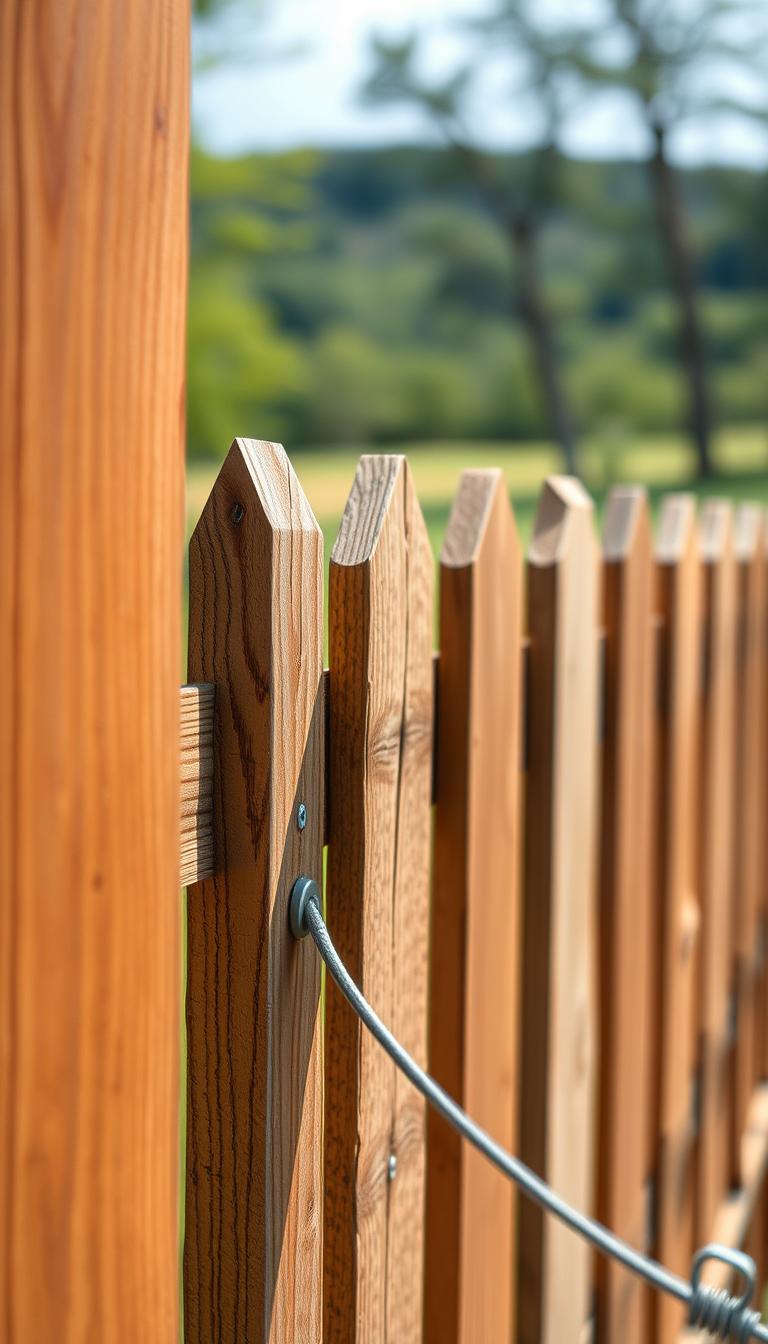
Yard shape affects installation complexity. Sloped terrain often requires stepped panels or custom-cut materials. Urban spaces with limited square footage benefit from vertical designs that maximize security without eating up play areas.
| Material | Ideal For | Maintenance Level | Cost |
|---|---|---|---|
| Vinyl | Chewers, wet climates | Low | $$$ |
| Wood | Custom designs | High | $$ |
| Metal | High-security needs | Medium | $$$$ |
Budget, Maintenance, and Material Considerations
Initial costs vary widely – prefab panels cost 40% less than custom builds. Vinyl resists rot but may fade in intense sun. Wood offers charm but needs yearly sealing. “Metal lasts decades but requires rust-proof coatings,” notes a landscape architect survey.
Balance aesthetics with practicality. Textured surfaces deter climbers, while transparent materials preserve views. Modular systems let you expand enclosures as needs change, keeping projects within budget.
Traditional Dog Fence Options: Wood and Chain-Link
When balancing security and style, traditional barriers remain popular choices for pet owners. Wood and chain-link structures provide proven containment methods, though their maintenance needs and visual impact differ significantly.
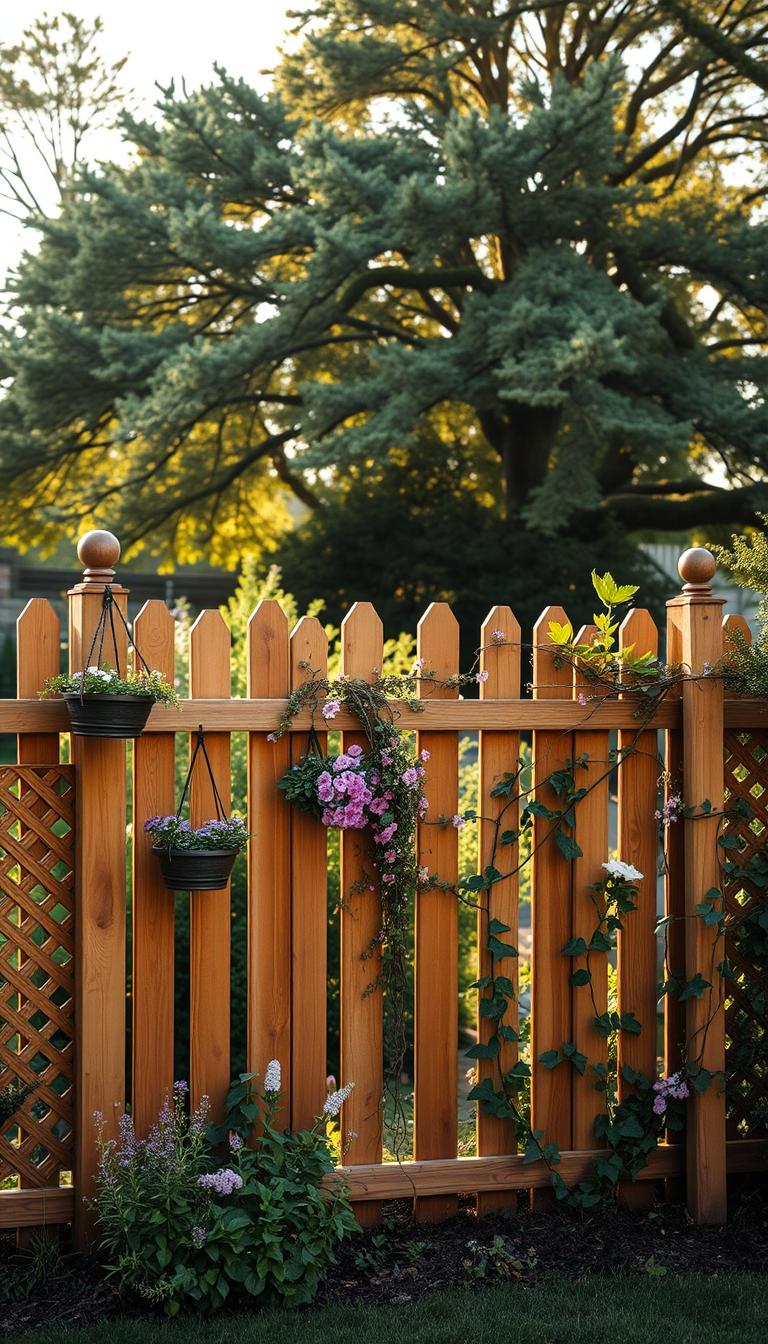
Wooden Fences: Classic and Customizable
Timeless wood barriers offer natural charm and personalization opportunities. You can stain cedar to match your home’s trim or paint pine boards in bold accent colors. One carpenter notes, “Clients often choose lattice tops for visibility while maintaining a decorative border.”
Pressure-treated pine resists rot better than standard lumber, making it ideal for humid climates. Spaced picket designs allow airflow while containing small companions. For added privacy, horizontal slat designs block outside distractions.
Chain-Link Fences: Durable and Cost-Effective
Galvanized steel mesh stands out as a budget-friendly solution requiring minimal upkeep. The open weave design lets you monitor playtime while containing energetic pets. Many homeowners add vinyl-coated green or black mesh for a softer appearance.
| Feature | Wood | Chain-Link |
|---|---|---|
| Installation Cost | $$$ | $ |
| Lifespan | 10-15 years | 20+ years |
| Visual Appeal | High | Medium |
Chain-link works great for large properties needing affordable coverage. Curved top edges prevent climbing, while buried base wires deter digging. Pair with evergreen shrubs to soften the industrial look while maintaining functionality.
Modern Dog Fence Solutions for the Tech-Savvy Homeowner
Technology transforms how we create secure outdoor spaces for pets. Innovative systems now offer boundary control without bulky structures, blending seamlessly into modern landscapes. These approaches prioritize adaptability while maintaining robust safety standards.
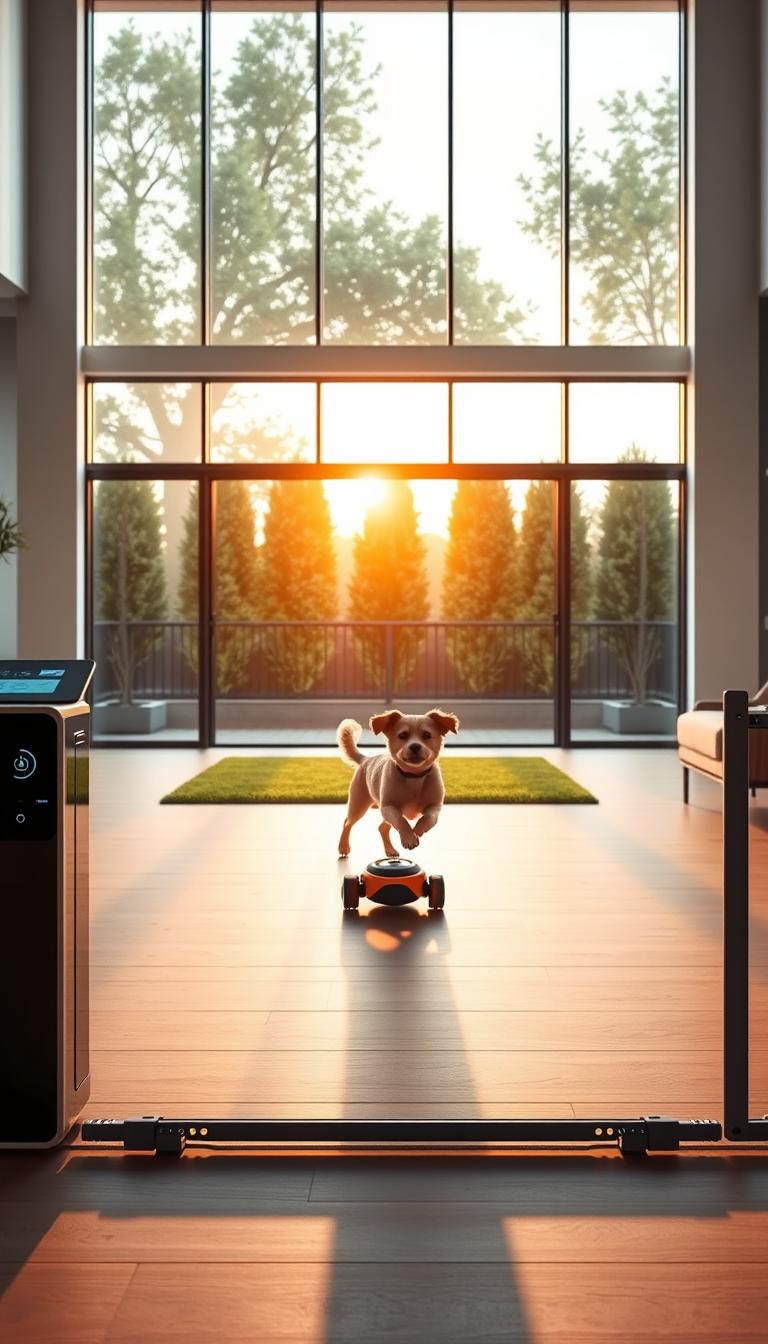
Invisible and GPS Systems Explained
Invisible barriers use buried wires or wireless signals paired with a collar receiver. When your pal approaches the boundary, the device emits a warning tone followed by a gentle static correction. Customizable zones adapt to irregular yard shapes, making them ideal for properties with natural features like ponds or slopes.
GPS-based alternatives track your companion’s location via satellite. You set virtual boundaries through a smartphone app, receiving alerts if they wander beyond safe areas. These portable solutions work for camping trips or rental homes where permanent installations aren’t practical.
| Feature | Invisible Systems | GPS Systems |
|---|---|---|
| Installation | Wired/Wireless | None |
| Maintenance | Wire checks | Battery changes |
| Coverage | Fixed area | Up to 1,000 acres |
One vet tech notes, “Clients appreciate how these styles eliminate obstructive barriers while keeping pets secure.” Pair them with decorative flower beds or pathway lighting to enhance your yard’s visual flow.
Choosing the right fence depends on your lifestyle. Tech-driven options reduce physical upkeep and preserve sightlines, letting your landscape shine. They prove safety and style aren’t mutually exclusive.
Exploring Best Dog Fence Ideas for Every Home
Flexible barriers address modern living challenges, from rental properties to backyard gatherings. Temporary setups offer practical security without permanent commitments, while customizable designs maintain visual harmony with your landscape.
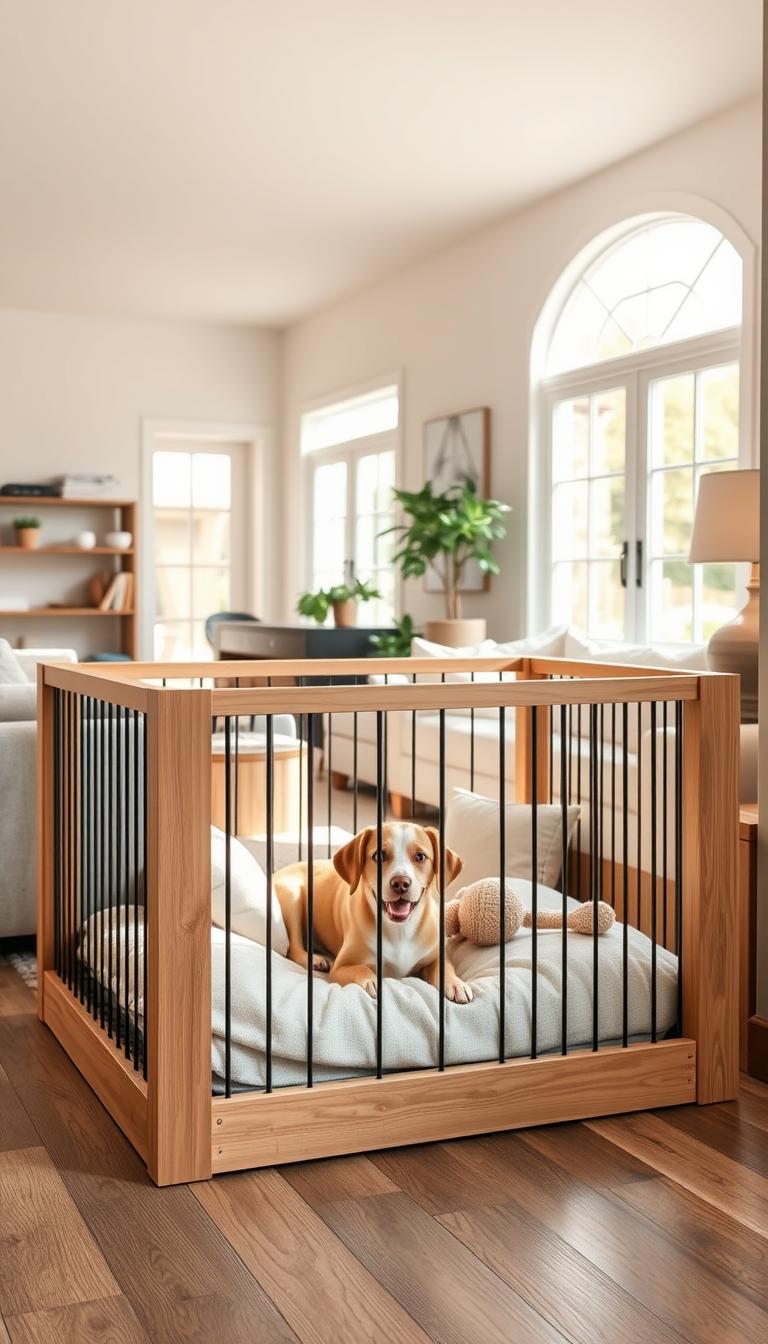
Portable Barriers for Short-Term Needs
DIY projects shine when you need quick, removable solutions. Repurposed pallets become instant enclosures—sand edges smooth and connect with hinges for easy storage. Lightweight metal panels with ground stakes work well for camping trips or outdoor events.
| Option | Setup Time | Reusability | Escape Prevention |
|---|---|---|---|
| Interlocking Panels | 15 minutes | High | Medium |
| Fabric Mesh Screens | 5 minutes | Medium | Low |
| PVC Pipe Systems | 30 minutes | High | High |
One renter shared, “We use foldable gates during BBQs—they contain our terrier mix and disappear when guests arrive.” Bury temporary bases 6 inches deep to deter diggers. Always pair these barriers with supervision for maximum safety.
Tailoring Aesthetics to Your Space
Match containment systems to your home’s architecture through color and texture. Paint metal grids to mimic wrought iron or wrap chicken wire around wooden frames for rustic charm. Vertical gardens integrated into lattice panels soften industrial materials.
Modular systems let you swap decorative inserts seasonally—try autumn-themed cutouts or spring floral patterns. For urban spaces, horizontal slats maintain sightlines while blocking escape routes. 93% of temporary barrier users report successfully blending these structures into existing decor.
Consider your companion’s habits when choosing materials. Smooth surfaces prevent climbers from gaining traction, while opaque sections reduce barking triggers. With smart planning, your solution becomes both functional and Instagram-worthy.
Material Matter: Vinyl, Metal, and Innovative Choices
Your outdoor space deserves materials that balance practicality with visual harmony. Vinyl and metal barriers dominate modern installations, each offering distinct advantages for pet safety and property enhancement. Let’s explore how these options stack up against evolving alternatives.
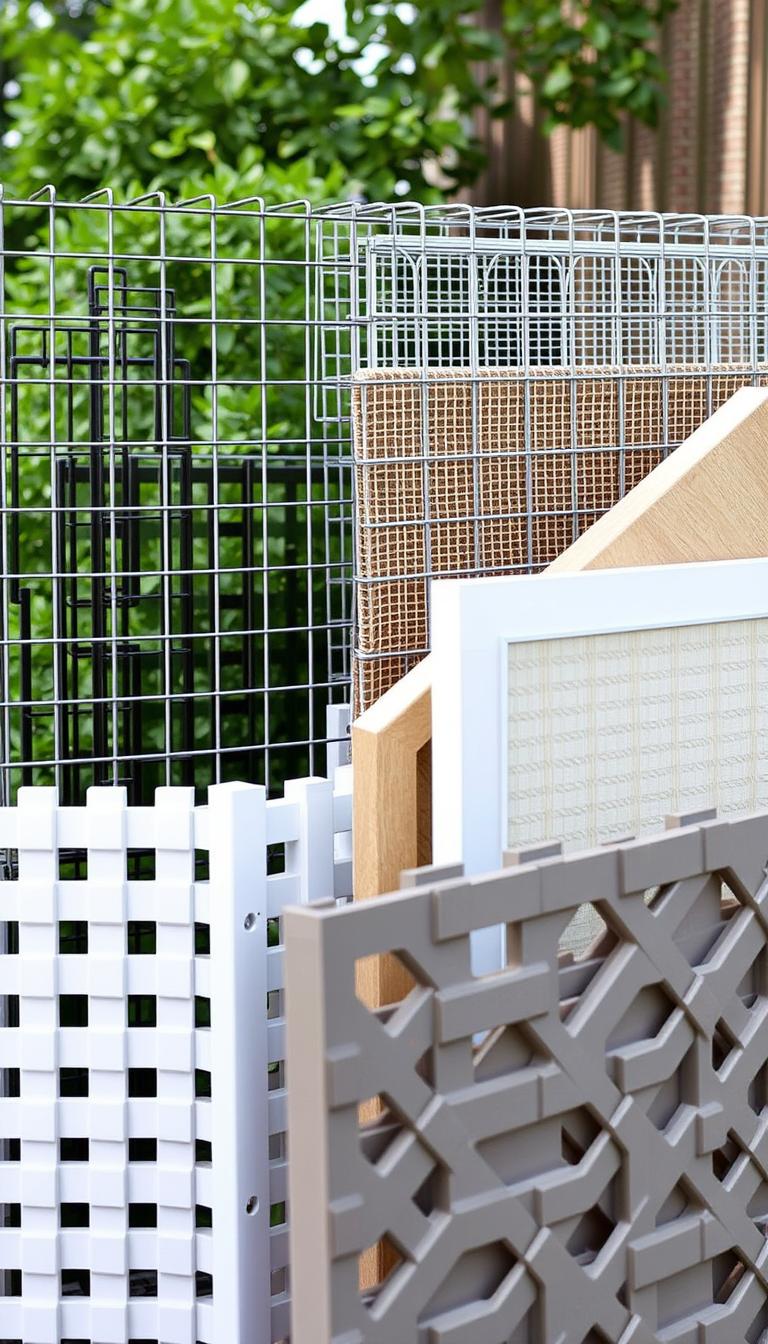
Comparing Vinyl and Metal Fence Options
Vinyl shines in low-maintenance scenarios. Unlike wood, it won’t warp or rot—ideal for rainy climates. Textured surfaces resist scratches from energetic companions, while UV-resistant formulas prevent sun fading. One installer notes, “Homeowners love how vinyl retains its crisp look for decades with just occasional hosing.”
Metal systems excel in stability. Powder-coated aluminum withstands chewing better than vinyl, and welded link designs eliminate weak joints. Adjustable height settings accommodate everything from Dachshunds to Great Danes. For sloped yards, modular panels adapt without costly custom cuts.
| Feature | Vinyl | Metal |
|---|---|---|
| Lifespan | 25+ years | 30+ years |
| Weather Resistance | High | Very High |
| Cost per Linear Foot | $25-$40 | $30-$50 |
The Advantages of Cutting-Edge Materials
Composite blends merge vinyl’s ease with metal’s strength. Recycled plastic grids reinforced with steel cores resist bending under pressure. These hybrids often feature interlocking link systems for seamless expansion as your needs change.
Corrosion-resistant aluminum alloys now mimic wrought iron’s elegance without the upkeep. Slim vertical pickets maintain visibility while blocking escapes—perfect for preserving your property’s sightlines. Some designs incorporate decorative scrollwork that elevates curb appeal.
When selecting materials, prioritize how they’ll age with your landscape. A sleek metal barrier might anchor a modern yard, while textured vinyl complements cottage gardens. Your choice impacts both daily function and long-term property value.
Smart Tips for Dog Fence Installation and Maintenance
A secure outdoor space starts with precise setup and evolves through consistent care. Proper techniques prevent common failures while preserving your property’s visual flow. Let’s explore methods to create boundaries that stand the test of time and weather.
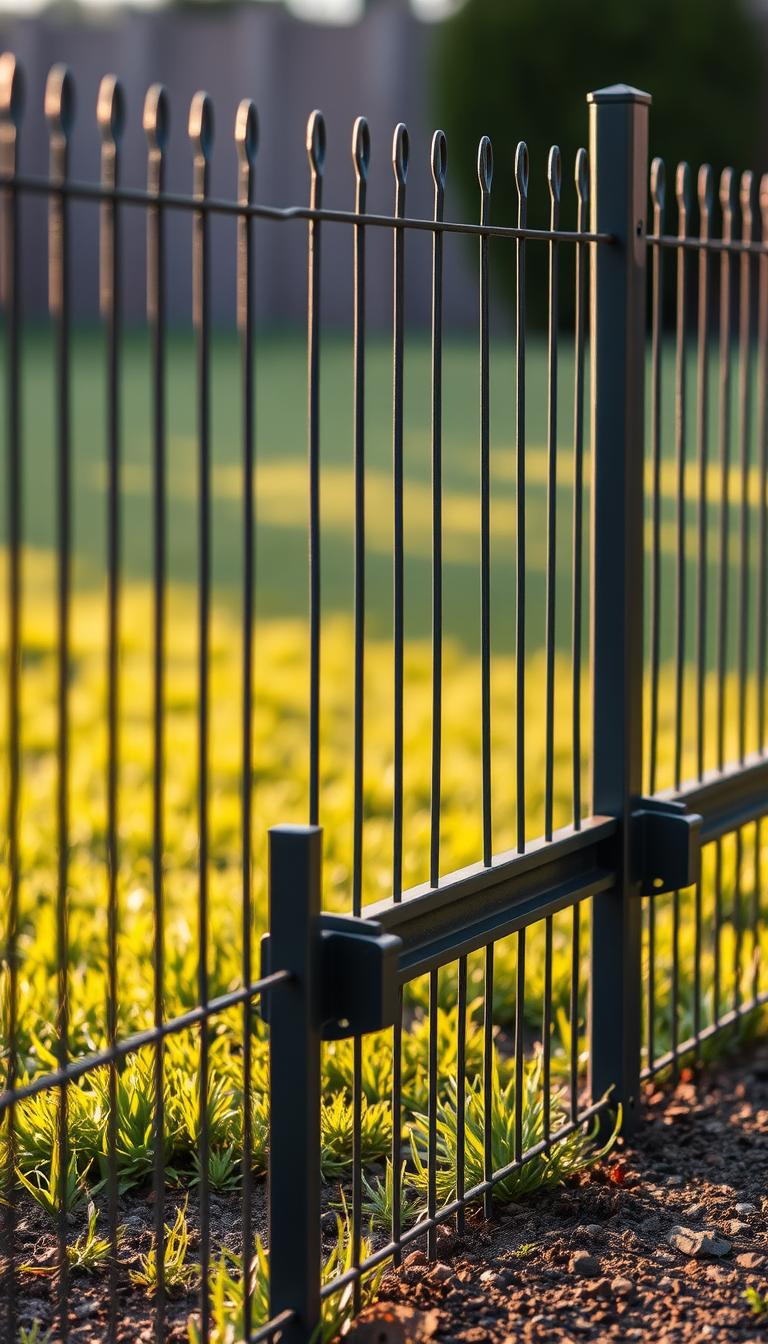
Foundation First: Building Reliability from the Ground Up
Begin with accurate measurements using stakes and string. Uneven terrain requires stepped installations to eliminate gaps at the base. For picket-style barriers, maintain 2-3 inch spacing between vertical slats—this deters escapes while allowing airflow.
| Material Type | Post Depth | Spacing Tip | Weatherproofing |
|---|---|---|---|
| Vinyl | 24″ | Use spacer blocks | None needed |
| Wood | 30″ | Pre-drill holes | Seal annually |
| Metal | 18″ | Weld joints | Rust inhibitor |
Concrete footings add stability in windy areas. One contractor notes, “Angling posts slightly outward creates natural climb resistance.” Always check local utility lines before digging to avoid costly mishaps.
Sustaining Your Structure Through Seasons
Monthly inspections catch early signs of wear. Look for loose pickets in wood barriers or faded colors on vinyl. Pressure wash surfaces biannually to remove dirt that hides damage.
- Trim vegetation near bases to prevent moisture buildup
- Re-tighten hardware during spring thaw
- Apply UV-protectant coatings to maintain vibrant colors
Mind temperature changes—metal expands in heat, requiring adjustable brackets. For mixed-material types, use compatible fasteners to avoid galvanic corrosion. With these strategies, your enclosure remains both functional and visually cohesive for years.
Conclusion
Ensuring your pet’s safety while enhancing your home’s appeal starts with the right barrier choice. By selecting materials that align with your needs—like durable chain link for active companions or classic wooden fences for traditional charm—you create spaces where security meets style.
Proper maintenance ensures barriers withstand weather and wear. Fences may require seasonal checks, but quality installations reduce long-term effort. Pairing functional designs with your landscape prevents escapes while preserving curb appeal.
Your choices impact more than personal property. Thoughtful containment solutions foster neighborhood harmony by keeping pets secure and yards intact. Whether opting for modern tech or traditional builds, the investment pays off in peace of mind and community relations.
Ready to start? Assess your space, consider local wildlife, and consult zoning rules. With smart planning, your outdoor area becomes a safe retreat that benefits everyone—furry family members included.

